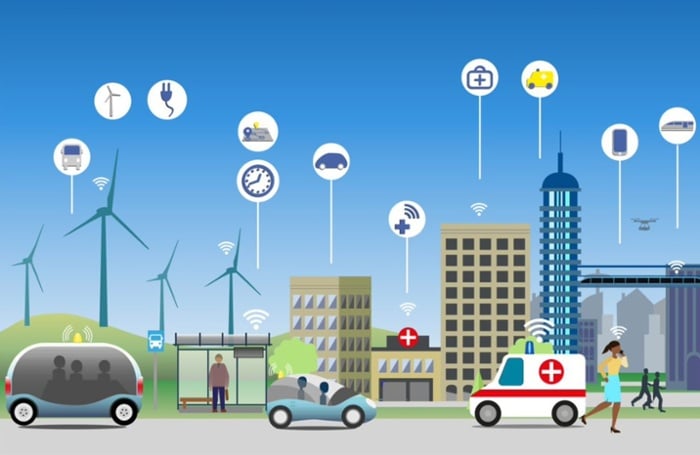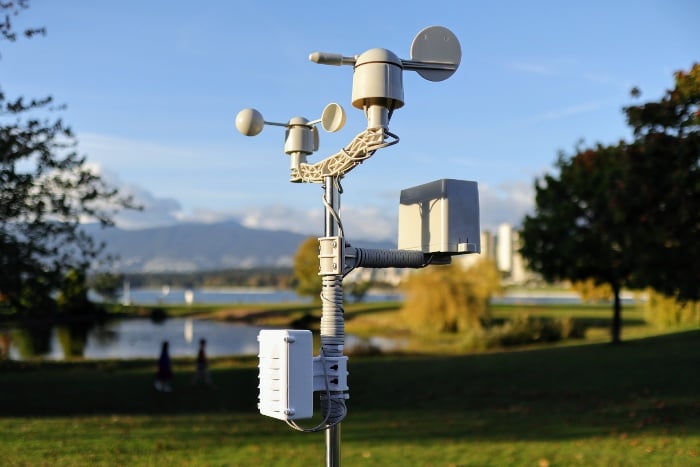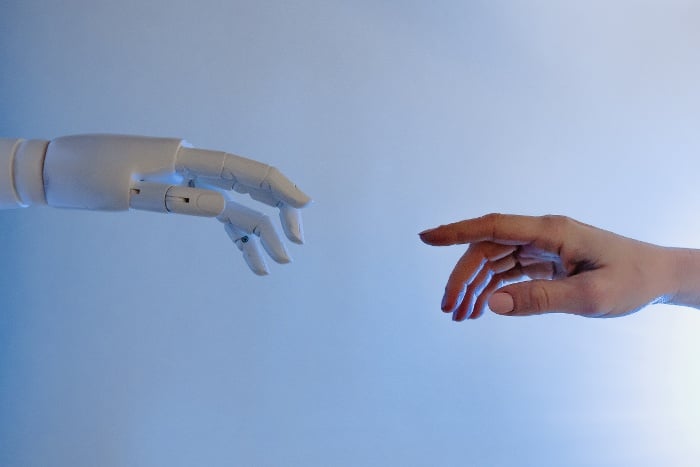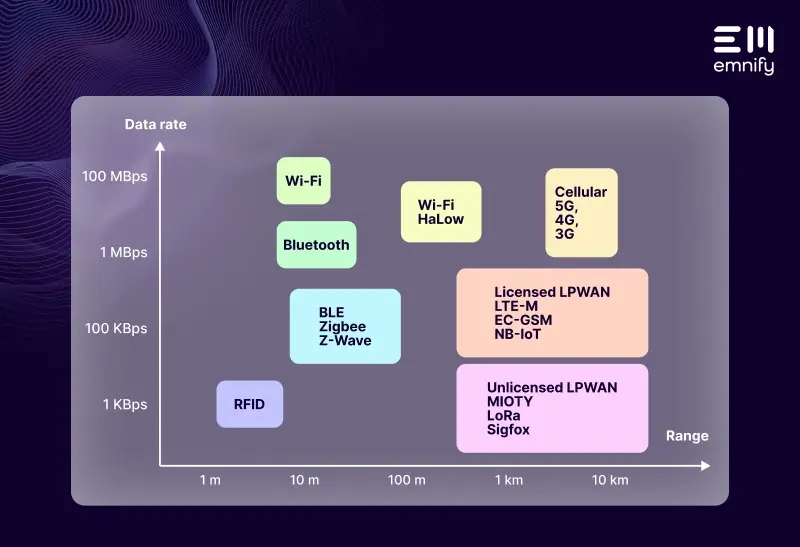

There are more than 10 billion IoT devices worldwide, and this number is projected to reach about 30 billion by 2030. Connectivity has countless applications for consumers and businesses alike. New technology enables manufacturers to make these devices smaller, more efficient, more powerful, and more versatile.
Whether a business adds connectivity to old equipment or builds a new solution from scratch, the Internet of Things (IoT) brings advanced capabilities to a wide range of processes. Broadly speaking, connecting physical devices to a network enables end users to remotely monitor, analyze, control, and automate their operations. But what that actually looks like depends on the device and its underlying technology.
Here are 10 examples of how IoT transforms the way we work and live.
1. Fleet management
Even with just a handful of vehicles to coordinate in a small geographic area, businesses must know precisely where they’re located and how they’re being used to optimize routes and save on fuel costs. A local house cleaning company may need to know which van is closest to which job site to coordinate new service requests. Or a national courier service may need to schedule service at the nearest shop for a truck that just popped a fault code. GPS trackers, some of which connect to a vehicle’s OBD II ports, can give fleet managers real-time visibility into their equipment’s location, speed, fuel usage, and more.
Fleet management IoT use case
Inquest Wireless uses IoT connectivity to help car dealerships and financial institutions track down vehicles due for repossession.
2. Micromobility
A growing number of micromobility services have made rentable bikes, scooters, and other personal transportation vehicles available in cities around the world. These services rely on cellular IoT connectivity to ensure the pool of vehicles can be recovered and reused and that customers can be billed appropriately (and automatically) for each ride.
Micromobility IoT use case
Ryde, a leading e-scooter service in Norway, uses an IoT unit in each of their 20,000 scooters to activate and deactivate the device.
3. EV charging
Eager to reduce carbon emissions, governments like the US and EU are heavily investing in EV infrastructure. As consumers and businesses embrace electric vehicles, EV charging businesses are working to establish enough charging stations to keep them running. These distributed self-service units are often in parking garages, other covered areas, or remote locations. They need IoT connectivity to facilitate transactions, monitor power usage, and remotely perform diagnostics.
EV charging IoT use case
Be Power, an Italian EV charging provider, operates thousands of charging stations and allows customers to connect and pay for each charge through an app.
4. Building monitoring
Building automation is an increasingly common use case for IoT. Facility managers want to keep operating costs low, and IoT sensors allow them to remotely monitor who’s in the building and equipment and resource use. Smart buildings enable them to configure the HVAC system, lighting, and other infrastructure to react as people come and go automatically. This keeps employees comfortable, preventing wasteful power consumption and reducing reliance on manual adjustments.
5. Environmental monitoring
Traditionally, environmental monitoring has involved a significant amount of manual data collection as experts examine changes in soil, water, air, and other conditions. Monitoring this data over time gives governments, businesses, and organizations better insights into how various processes impact the environment so they can make more informed decisions. Using IoT, stakeholders can collect, organize, and analyze this data remotely, reducing their reliance on expensive on-site visits.
Environmental monitoring IoT use case
In-Situ connects telemetry devices to a data services platform that enables customers to monitor water conditions remotely.
6. Predictive maintenance
Every year, unplanned downtime costs manufacturers billions of dollars globally. Equipment breaking could force them to halt operations—for hours or even days—until they can get the parts and services they need. Failures can also cause serious injury or death, leading to lawsuits and significant fines. Predictive maintenance systems leverage connected sensors and machine learning to predict when a machine is likely to fail. Businesses can schedule services and order parts before there’s a problem. The sensors detect changes in conditions like temperature, output, pressure, vibration, or sound and use the asset’s maintenance history to connect these changes to previous failure patterns.
7. Smart farming
Agricultural operations tend to have razor-thin margins. But using advanced IoT-powered tech, farmers around the world are discovering opportunities to increase crop yields, manage livestock, reduce waste and losses, and maximize efficiency. In some cases, IoT is improving operations by automating manual processes—like irrigation and cow milking. In others, it’s giving farmers the visibility they need to optimize their resources and equipment.
Smart farming IoT use case
Smartisland, for example, lets farmers monitor their crops, empowering them to optimize resource consumption and prevent diseases.
Read Smartisland's case study >>
8. Medical IoT
Medical equipment constantly collects data, which providers, caretakers, and patients rely on to make informed healthcare decisions. Depending on the equipment and the patient, conditions can change quickly. A fast response can make the difference between life and death. Medical IoT enables providers to monitor patients remotely, receive alerts when conditions become dangerous, and collect and analyze data more efficiently.
9. Smart metering
In the past, utility providers had to manually visit each customer and check each utility meter to analyze resource consumption and bill customers correctly. Modern providers use smart metering to connect physical meters to a digital application, allowing them to remotely collect utility data in real time. This helps them allocate infrastructure, automate billing, and give their customers better insight into their resource consumption.
10. Smart security
Over the last few years, consumers and businesses have seen a surge of demand for smart security cameras. Footage from retail security systems regularly floods social media. This access to remote video monitoring is made possible by IoT. Whether the cameras are always on or motion activated, connectivity enables them to send alerts to an end user via text, email, or mobile app. From there, they can access the footage on demand.
Is your IoT use case ready for cellular connectivity?
emnify is a leading cellular IoT connectivity provider. Our global IoT SIMs let your devices connect to more than 540 networks in over 195 countries. With our intuitive connectivity platform, you can manage your deployments from a single portal and monitor every device at once through our convenient dashboard.
Want to see what emnify can do for your IoT application? Start a free trial or talk to an expert.
Get in touch with our IoT experts
Discover how emnify can help you grow your business and talk to one of our IoT consultants today!

Nathan Schlaffer
More than 7 years of experience translating hi-tech connectivity and SaaS products for Internet of Things into simple and compelling use cases across a broad range of vertical markets from manufacturing to transportation to oil and gas.



